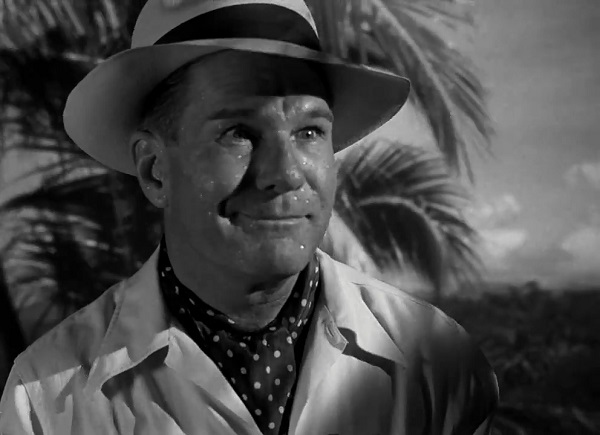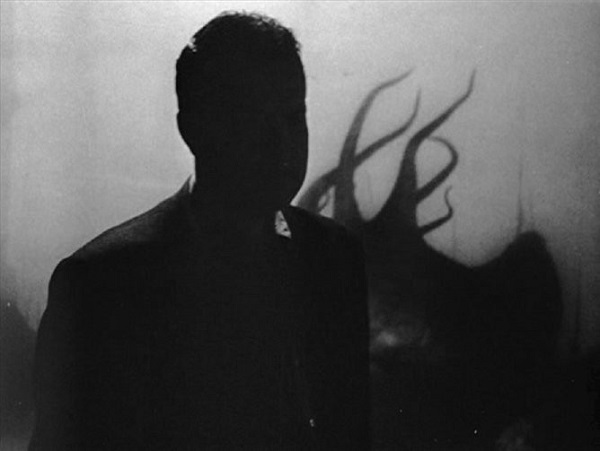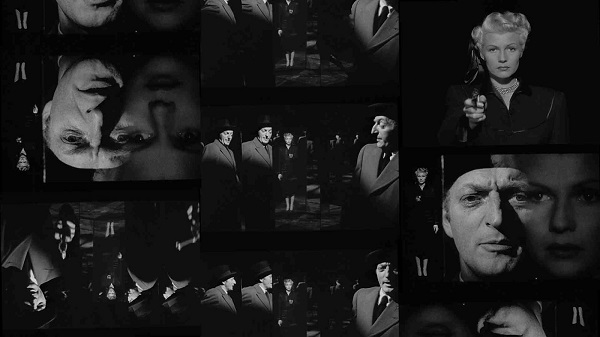Silverscreen standards: The lady from Shanghai (1947)
Despite the ice cold shade of Rita Hayworth’s hair, The lady from Shanghai (1947) plays like a fever dream, bewildering and sweaty, long before it reaches its famous fun-house climax. It’s a favorite among classic noir fans, although it suffers from many of the usual problems of an Orson Welles film, most notably the studio editing that undermined Welles’ intentions and eliminated large parts of the film. Maybe the issues weaken the final product, and maybe they just add to its disturbing vision of sharks in the water, crazy for fresh blood. So much is happening below the surface The lady from Shanghai, and we only see brief flashes of this hidden action in the final film, but what we see both captivates and repels us. It is the dark side of the sublime and thus the very essence of noir.
Of course, Welles is the center of the picture, as director, producer, screenwriter and star. He plays Irish seaman Michael O’Hara, who reluctantly accepts a job on powerful lawyer Arthur Bannister’s (Everett Sloane) luxury yacht after Bannister’s wife Elsa (Rita Hayworth) takes a liking to him. Elsa implicates Michael in adultery and a plan to escape her husband, while Arthur’s partner George Grisby (Glenn Anders) lures Michael into an even more dangerous plan involving faking George’s death and getting Michael to confess to killing him . Everything goes wrong, as noir characters’ plans always do, and Michael ends up on the run from a murder case that threatens to send him to death row.

The third act is riddled with plot holes and questions, but that doesn’t matter because nothing in the film is designed to make sense. It means instilling fear and claustrophobia, paranoia and doubt, and it does so to the utmost. It is an American post-war remix of The Odyssey; behold the weary sailor, far from home, thrown upon strange islands, and inundated with monsters. We see the name of the yacht, Circle, and then we see Elsa, a siren on the rocks, beautiful and deadly. Arthur and George are also monsters, but less beautiful, and the whole picture feels like a journey through the underworld, especially the bizarre aquarium scene, the courtroom circus, the Chinatown chase, and the fun house finale. Even in the sun these figures seem to inhabit hell; only Elsa always looks cool.

The performances add to our fascination and uneasiness, particularly Glenn Anders’ utterly deranged George, whom we often see in dizzying close-ups that emphasize his sweaty face and insanely bright eyes. Arthur’s habit of calling Elsa “mistress” oozes irony; There is no love here and they both know it. Arthur’s crutches suggest weakness, but it’s a trick. He wields terrible power over Elsa and George and enjoys playing with them and with Michael. Welles doesn’t have to work very hard to play desire for and distrust of Hayworth, his then-wife but on the verge of a divorce. Luminous in her shockingly short blonde waves, she is a mystery, a menace and a tragedy at the same time. At the edges of her story, we feel like she’s a created rather than a born monster, perhaps cursed for being too beautiful, like nymphs who attract the lust of the gods. Who wouldn’t do terrible things to escape a man like Arthur? The mirror sequence at the end shows the two, Arthur and Elsa, reflecting and aiming together, shooting themselves while shooting at each other. Like so many noir couples, they share a fatal bond that binds them together no matter what plans they hatch.

Famed film critic Dave Kehr called The lady from Shanghai “The weirdest great movie ever made,” but if you’re looking for equally weird bedfellows with a similar nightmare vibe I guess night tide (1961) and Carnival of Souls (1962) both fit the picture. Welles is best remembered today Citizen Kane (1941), but for more of his noir work see The unknown (1946), The third man (1949) and touch of evil (1958). Rita Hayworth is an icon in guild (1946) but I love her lighter side in musicals like You will never get rich (1941), you were never more beautiful (1942) and cover girl (1944).
…
— Jennifer Garlen for Classic Movie Hub
Jennifer Garlen writes our monthly silver screen standards column. You can read all of Jennifer’s Silver Screen Standards articles here.
Jennifer is a former college professor with a PhD in English Literature and a lifelong obsession with film. She writes about classic films on her blog, Virtual Virago, and presents classic film programs for lifelong learning groups and senior communities. She is the author of Beyond Casablanca: 100 Classic Movies Worth Watching and its continuation Beyond Casablanca II: 101 Classic Movies Worth Watchingand she is also co-editor of two books on the works of Jim Henson.









